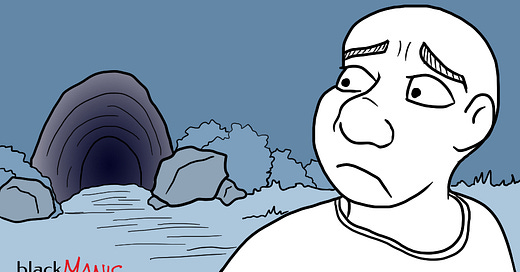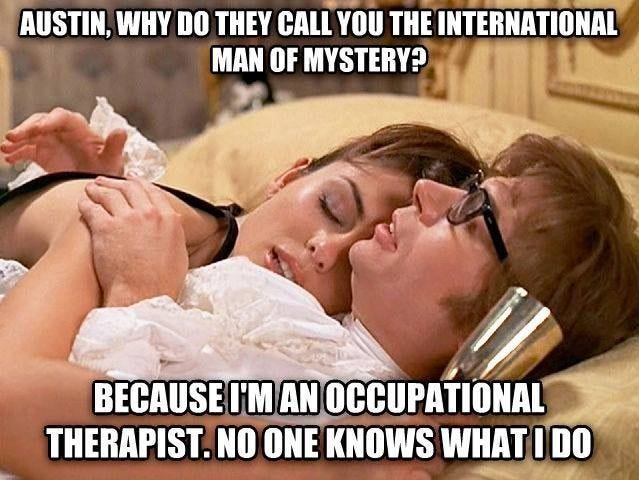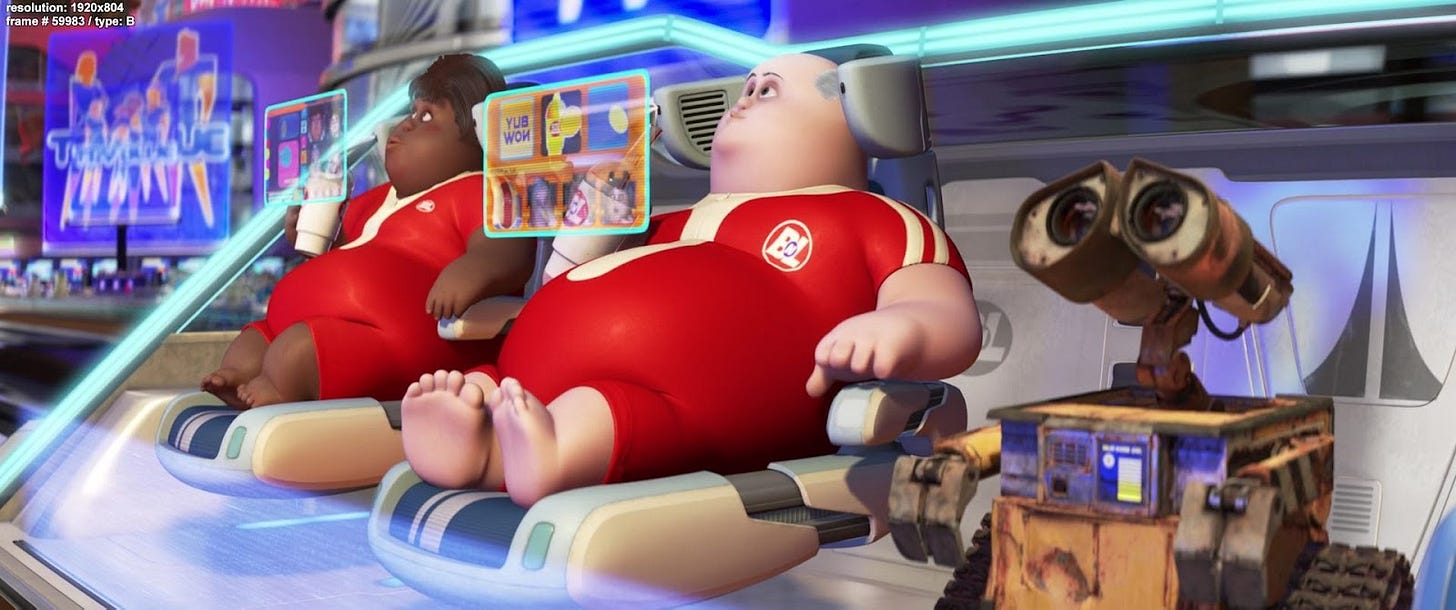Please bear with me fellow creatives. This is a topic that spills over into all aspects of my life, and likely yours as well. “Gently moving into the pain”, I hope will become a driving force in all of our lives that will lead us to a brighter future as individuals, artists and as a society.
Although I began this substack to discuss and promote artistic works, I have shared in the past that I work with youth as a Mental Health clinician. I don’t think I have ever spoken about my time working in a rural physical rehabilitation program.
I know, it’s sort of unusual for a healthcare professional to do both, but that is the beauty and strangeness of the profession of Occupational Therapy.
At one point, I worked with a remarkable Physiotherapist, I am embarrassed to admit that I don’t recall his full name, but I’m pretty sure we just called him “Rick”. (I deeply apologise if I am remembering that inaccurately). Rick was a locum and a highly skilled Physiotherapist. He was also, I believe, an introspective and thoughtful human being. I had a few very interesting conversations with him during his time with us.
During one such chat, Rick said something that has stuck with me ever since. He was talking about human behaviour, in general, but also about rehabilitation and therapy clients. Rick said (I’m paraphrasing, from memory here) that “people will not change their behaviour until the pain of changing is less than the pain of not changing”. I’m not sure where Rick first heard this, I have since seen it attributed to the motivational speaker Tony Robbins, but I’m pretty sure that’s not where Rick first encountered it.
In the context of physical rehabilitation, that adage is pretty obvious. As a Mental health clinician I also see this pattern. People will continue engaging in familiar behaviours, even though they may be harmful, rather than adopt new behaviours that are healthier, because “change” itself is somehow frightening, and painful. Even in the realm of addictions, where it is quite clear that the addictive behaviour is detrimental to their health, people struggle to change for reasons beyond the physically addictive qualities of the substances.
Human beings, in general, seem to be hard wired to have a fear of the unknown. Of course there are exceptions. Some people seek out mystery and enjoy the rush of facing that fear. As an overall human trait, I have the sense that most people will choose the familiar over the unfamiliar most of the time. This often is not a problem, unless the “familiar” is actually something harmful or injurious.
When someone slowly develops bad habits, such as drinking too much, or eating in an unhealthy way, it becomes very easy to just ignore the consequences and continue to engage in the behaviour. Everybody knows that overeating, smoking, excessive drinking and a sedentary lifestyle all negatively impact health and well being. Despite that knowledge, a large portion of the population still engages in at least one of these behaviours. To be completely up front, I have personally been guilty of all of these things at various points in my life. No one really wants to face the truth that eating a relatively healthy diet, sleeping well, getting some regular exercise and meditating can improve almost all aspects of health if done consistently over time.

For most people, changing those habits is an excruciatingly painful concept. It takes effort, it requires some form of conviction or motivation. Many people can’t initiate such a change until they are faced with an ultimatum. When they have a heart attack, or develop a diabetic neuropathy. When they realise that they can no longer climb a set of stairs without wheezing, or their anxiety becomes so great that they are having panic attacks. Then it becomes real. Then they realise that they “must” change if they want to continue to live on this earth and enjoy the other things that make life worth living.
Gently moving into the pain, in the case of physical injury, is beneficial to avoid tissues healing in a way that no longer supports normal function. When a tissue becomes injured, if it is a soft tissue such as muscle, you must gently move it through its typical range of motion, even when you experience some discomfort, in order for it to heal in a functional way. If you completely avoid the pain, then the tissue will heal in a non-functional way. It will heal in a way that actually restricts your natural range of motion. You potentially will permanently reduce your own function, because you were afraid to experience a minor discomfort.
As artists, we also must face the “pain” of growth and development. We begin our journey, novices, unaware of the precipices and the depths of our path. We are excited, fascinated, interested. We are infatuated with every piece of art that we usher into existence. Then, eventually, we have to face that horrific moment. The experience of receiving criticism, particularly from someone who we respect or look up to. This is the “pain”. This is the moment where we, as artists, must choose. We must choose to either reject, avoid and protect ourselves from the pain, or to accept, embrace and grow from it. We can become trapped in cycles of behaviour that hold us back. We can seek out validation from people who will never criticize us. We can retreat and only create privately to avoid the potential for criticism. We can endlessly repeat a specific style, because we get positive feedback from others, even though it does not facilitate artistic growth. We can adopt styles and conventions that are “popular” even though they don’t really speak to us in an artistic or creative way. All of us likely understand that we cannot create without some form of mess, struggle or challenge, but we can easily fall into the trap of seeking to avoid it.

Moving, gently, into the pain, is the most healthy path to growth and improvement. Human beings cannot excel without overcoming obstacles. If we live in an environment that supplies all of our needs, without any effort on our part, we become fragile and impotent. We simply exist.
I am reminded of the Pixar movie Wall-ee. The human beings on the space ship were so avoidant of any form of struggle or discomfort, that they became completely de-conditioned to the point that they could barely walk on their own.
To be fair, the humans in that movie had been raised in that environment from birth. Their every whim catered to by the robotic servants of their space-ship. Most of them didn’t even realise that there was any other way to live or that facing challenges and overcoming them is what many would say gives life meaning. They survived, but they did not “live”, as the ship captain eventually said.
This idea of facing challenges, of overcoming obstacles, applies equally to physical health, mental health and broadly just “growth” in general. The more that we avoid, the less resilient we become. It is a foundational principle of physical rehab and mental health treatment for diagnoses such as an anxiety disorder (see this humorous post for more about anxiety by
). It is also applicable to health improvement. Sedentary lifestyles are certainly more comfortable than a lifestyle of vigorous physical activity and are more likely to promote ill-health. I have long wanted to write a book on this topic. A holistic view of “Dis-Ease” that would explore the human condition and promote facing discomfort as a foundational principle of mental, emotional, physical and spiritual health.Artists, in my opinion, are meant to walk the edge of society, to push the boundaries, to bump up against the “status quo”. Artists are supposed to be a focal point for societal progression. We, as creatives, should always be a little uneasy. We should be a little frustrated or angry about the state of the world that we live in. We are supposed to be somewhat dissatisfied. We expose the larger society that we live in, to a variety of ideas and perspectives that they otherwise would not encounter. We push society toward progress and change. Or at the very least, encourage people to question their assumptions.
Poets, painters, writers, draughtsmen, pencillers, inkers, musicians, and game creators all have a role to play in encouraging their societies to explore the boundaries of their accepted beliefs. I do not assume that all rituals, norms or traditional beliefs are by default wrong. I simply believe that it is important to examine those practices and beliefs, regularly, to ensure that they still make sense, given a modern understanding of things.
Almost all aspects of life benefit from facing and overcoming challenges. Human growth, both as individuals and as a species, requires facing discomfort in some form. It is an interesting dialectic that we are often motivated to create or invent, in an effort to make our lives easier, but that when we achieve a life of ease, our mental, physical and emotional health can deteriorate because of it.
Don’t fall into the trap of using avoidance as a strategy to live an easy life. It will ultimately create more hardship than it alleviates.
Move gently into the pain by facing your discomfort and you will truly build a life worth living.







